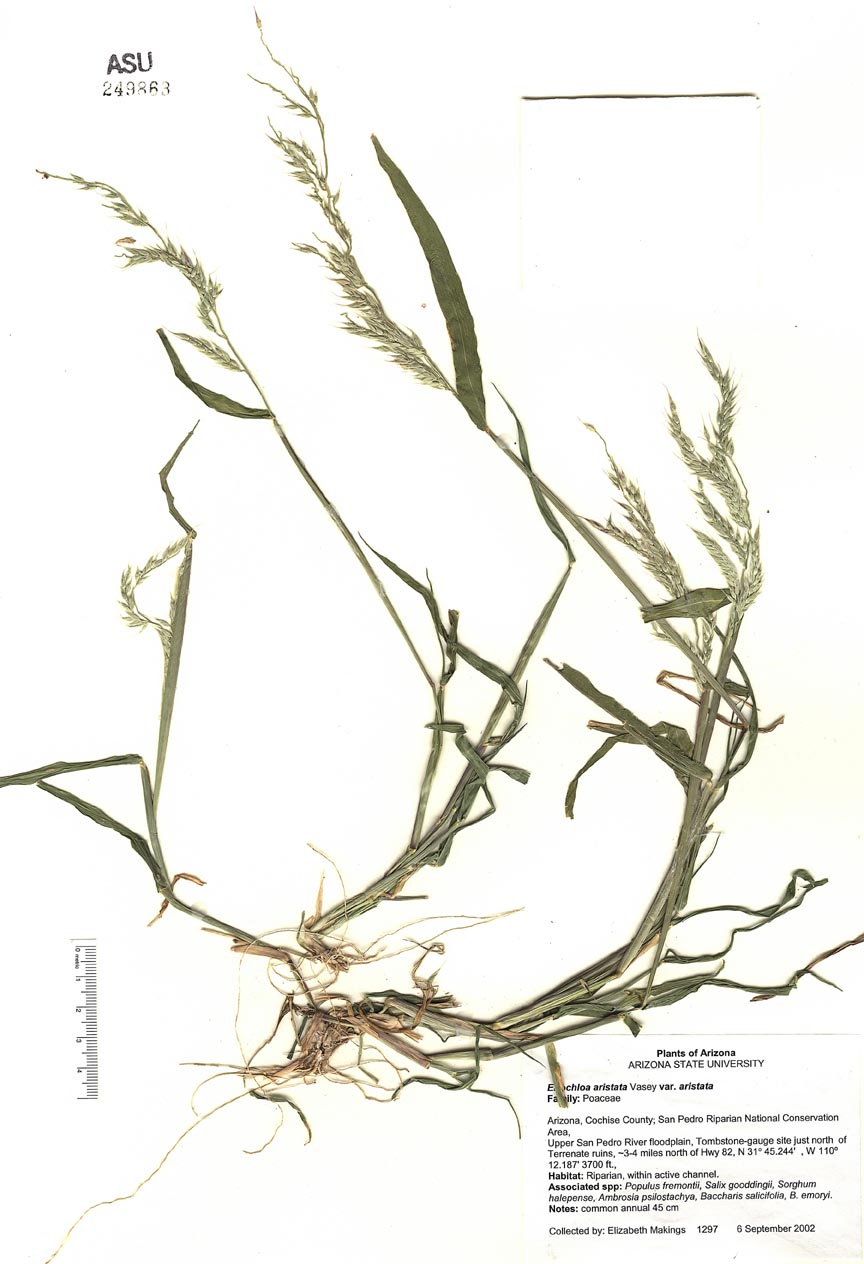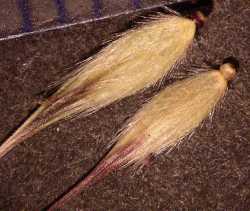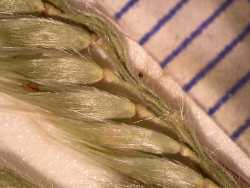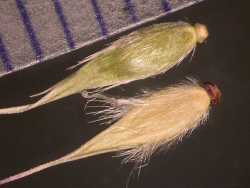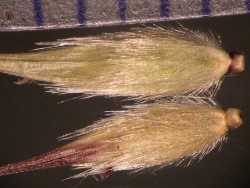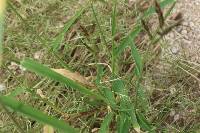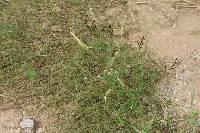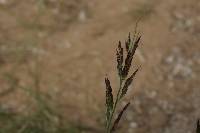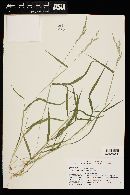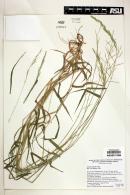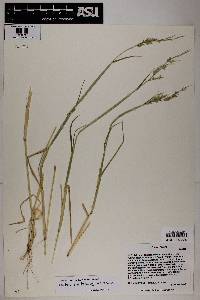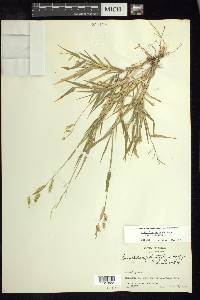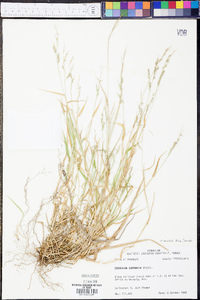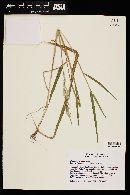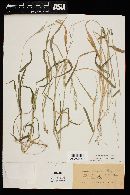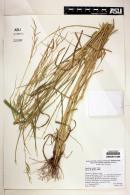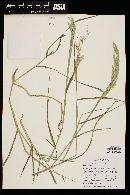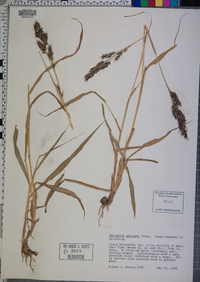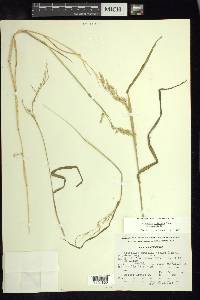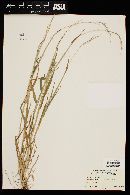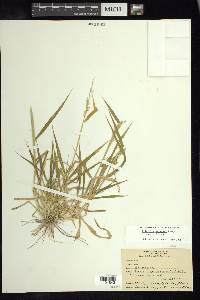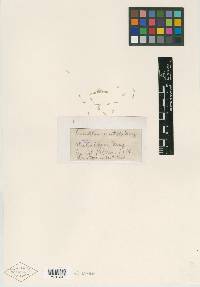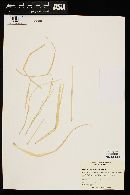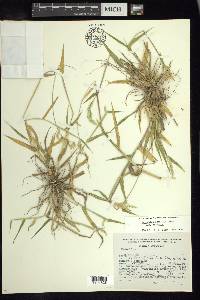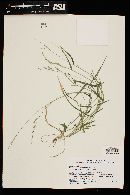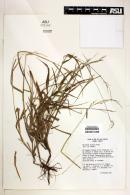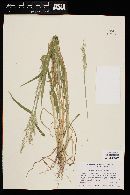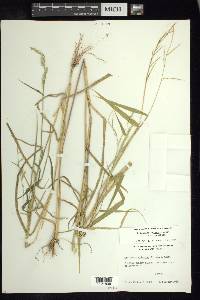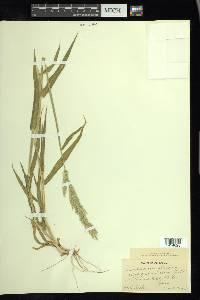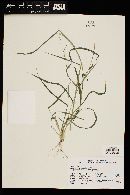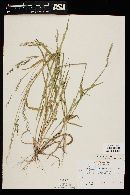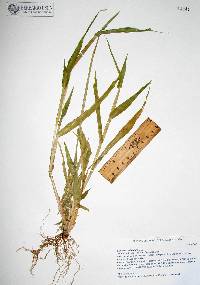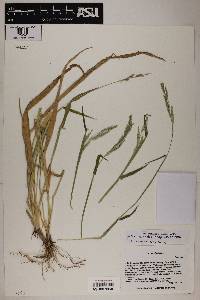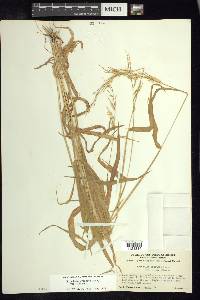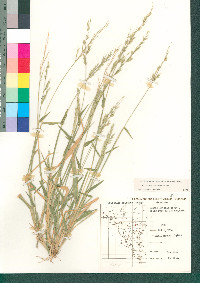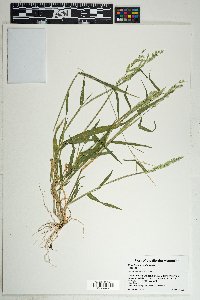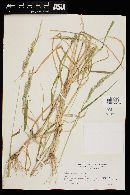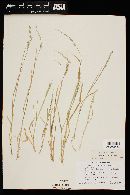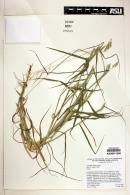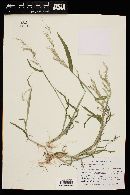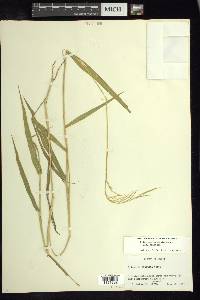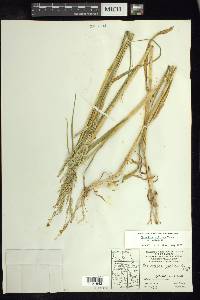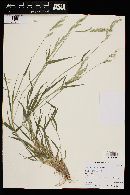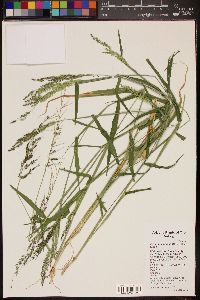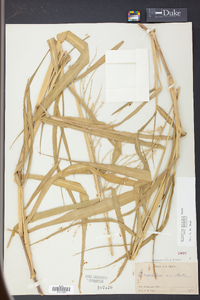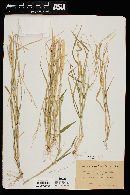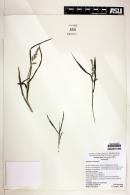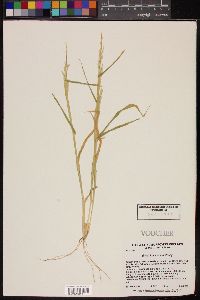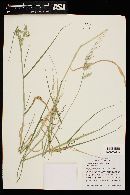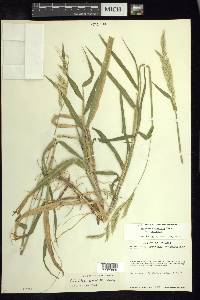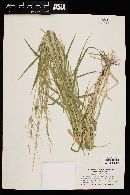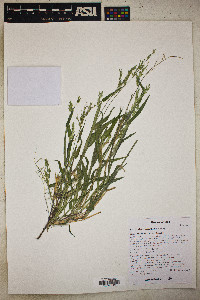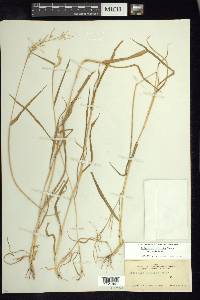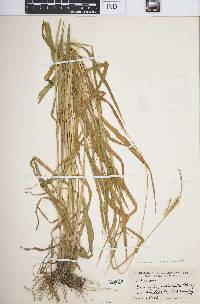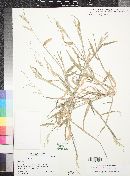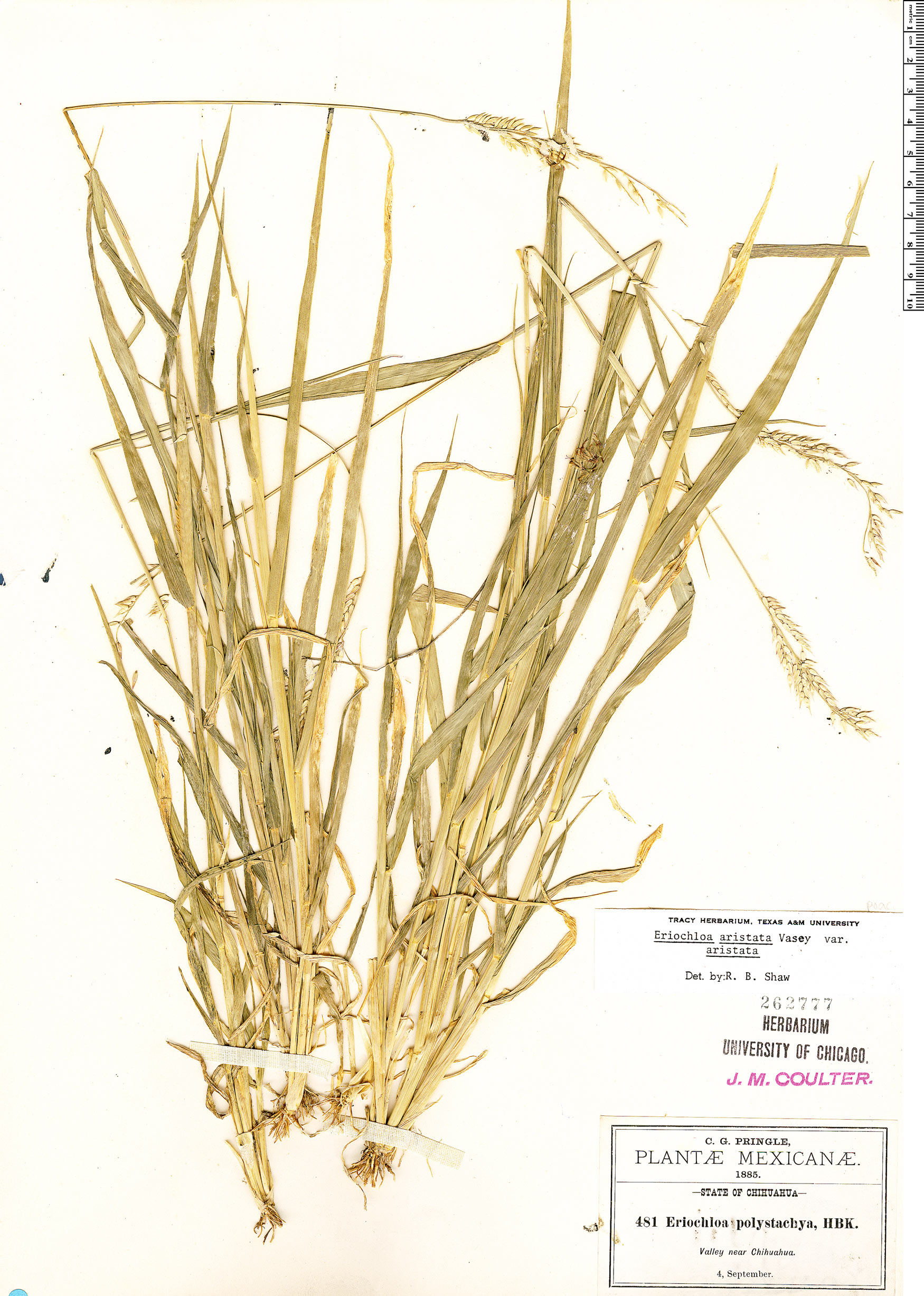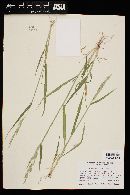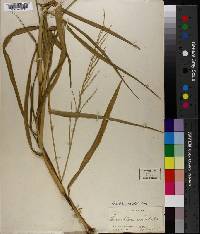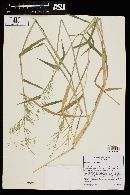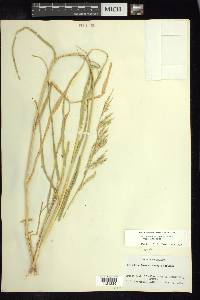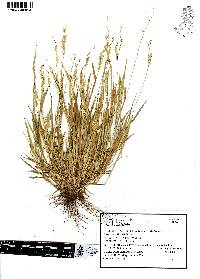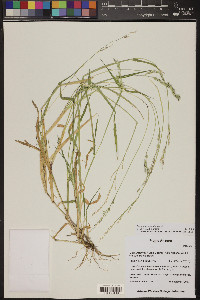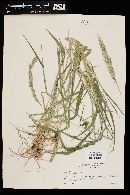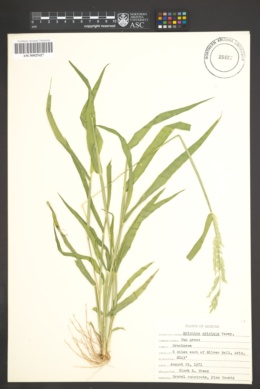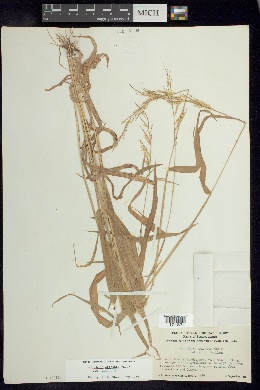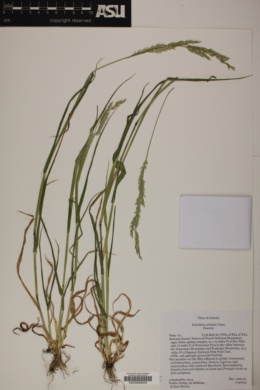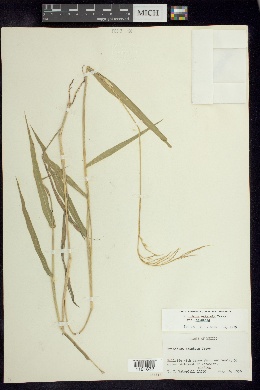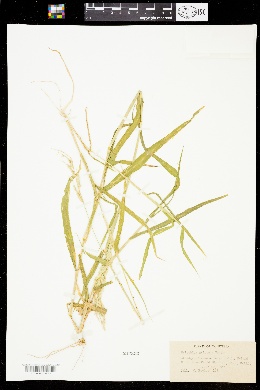
|
|
|
|
Family: Poaceae
Bearded Cup Grass, more...bearded cupgrass
[Eriochloa punctata var. aristata (Vasey) M.E. Jones] |
Plants annual; cespitose, not rhizomatous. Culms 40-100 cm, erect or decumbent, sometimes rooting at the lower nodes; internodes glabrous; nodes 3-10, puberulent. Sheaths glabrous; ligules 0.5-0.8(2) mm; blades 6-20 cm long, 6-20 mm wide, linear to lanceolate, flat or folded, straight or lax, glabrous (rarely sparsely pubescent) adaxially. Panicles 5-20 cm long, 1-3 cm wide, loosely contracted; rachises hairy; branches 16-30, 20-35 mm long, 0.3-0.5 mm wide, divergent to spreading, setose, not winged, with 20-35 spikelets in unequally pedicellate pairs; pedicels 0.5-3 mm, hairy, with some hairs 0.5-2.5 mm long, at least distally. Spikelets 4-8.8 mm long, 1.1-1.6 mm wide, lanceolate. Upper glumes 1-1.1 times as long as the lower lemmas, lanceolate, pilose or scabrous above, 5-veined, acuminate and awned, awns 0.5-3.5 mm; lower florets sterile; lower lemmas 4-8 mm long, 1.1-1.6 mm wide, lanceolate, setose, 3-7-veined, acuminate, mucronate, mucro less than 0.4 mm; lower paleas absent; anthers absent; upper lemmas (2)3-4(6) mm, 0.4-0.6 times as long as the lower lemmas, indurate, elliptic, acute to rounded, 5-veined, awned, awns 0.2-0.8 mm; upper paleas indurate, rugose. 2n = 36. Eriochloa aristata is a weed of moist swales, roadsides, and irrigated fields of the southwestern United States. Its range extends through Mexico and Central America to Colombia. There are three specimens from Oktibbeha County, Mississippi, two made in 1890 and one made in 1960. The last collection was from a waste area, which suggests that the species is not established there. The other two were both made in Starkville, where there is an experimental farm. The labels on the two specimens do not state whether the collections were made from experimental plantings or from plants that had escaped from such plantings. FNA 2003, Gould 1980 Common Name: bearded cupgrass Duration: Annual Nativity: Native Lifeform: Graminoid General: Tufted annual grass, erect or decumbent, sometimes rooting at lower nodes, 40-100 cm; stems glabrous with puberulent nodes. Vegetative: Sheaths glabrous; ligule 0.5-0.8 mm; blades 6-20 cm long, 6-20 mm wide, linear to lanceolate, flat to folded, straight or lax, glabrous on the upper surface. Inflorescence: Panicles 5-20 cm long, 1-3 cm wide, loosely contracted, with hairy rachises, branches, and pedicels; panicles with 16-30 divergent to spreading branches, each 2-3.5 cm long, with 20-35 spikelets in unequally pedicellate pairs; spikelets 4-9 mm long, 1-1.5 mm wide, lanceolate, with 2 florets,the lower florets usually sterile, upper florets bisexual; lemma appressed-hairy on lower half, tapering to an awn often as long as the body; total length of spikelet including awn is 7-11 mm. Ecology: Found along roadsides and in disturbed areas from 2,500-3,500 ft (762-1067 m); flowers July-October. Distribution: s AZ and s CA, south through MEX and C. Amer. to Colombia. Notes: Eriochloas are grasses with hard, single-seeded, pointy-tipped spikelets resembling panicum; this species is an annual and quite similar to the regionally more common annual E. acuminata, but it is distinguished in having longer pedicels, up to 3 mm long (up to 1 mm in E. acuminata) and having awn-tipped spikelets, the awns 0.5 to 3.5 mm long. Ethnobotany: Seeds were parched and ground and the flour was cooked or eaten dry. Etymology: Eriochloa from Greek erion, wool, and chloe or chloa, grass, while aristata means having a long, bristle-like tip. Synonyms: Eriochloa aristata var. aristata Editor: SBuckley 2010, AHazelton 2015 |
|
|
|

